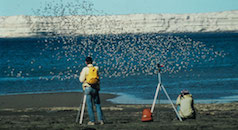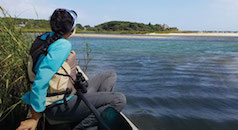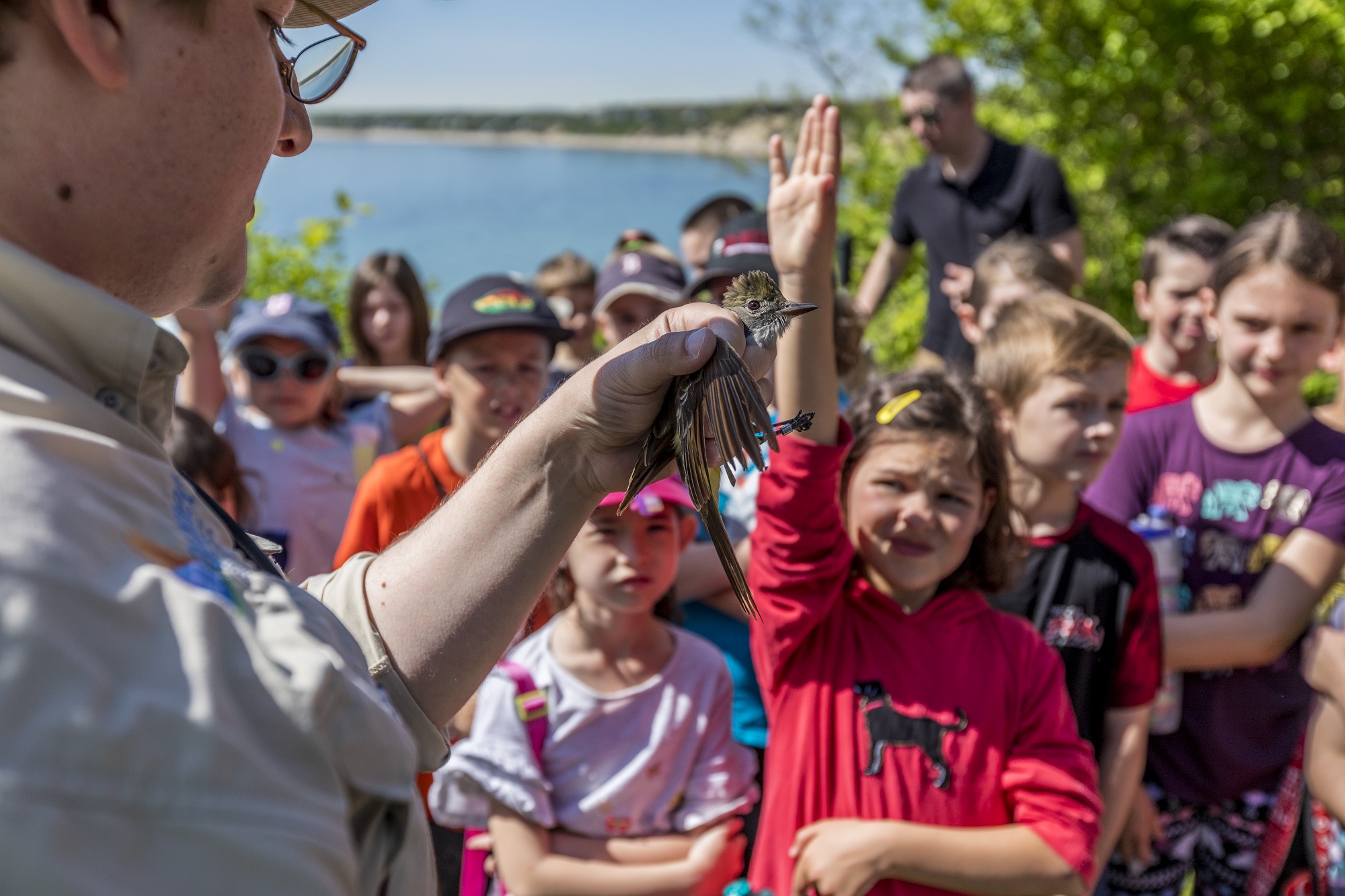Search Results

Sea Run Fish
Restoration of river herring is critical to rebuilding coastal ecosystems and strengthening climate resilience as the Gulf of Maine continues to warm. Manomet supports community-driven river herring stewardship and is tracking the impact of such efforts on the health of river herring runs. River herring is a collective term for two species, alewives and blueback herring. They are anadromous, which means they live primarily in the ocean and migrate upstream each spring to spawn in freshwater lakes and ponds before returning to the ocean. Historically, they have been foundational species in the Gulf of Maine ecosystem, comprising an important source of forage for birds, mammals, and commercially valuable species including cod and haddock. Over the last four hundred years, dams,...
Interview with Scott Johnston, US Fish and Wildlife
One of Manomet’s core beliefs is that by working in partnership, we can more effectively influence and scale our impact. One key example of this partnership is the Atlantic Flyway Shorebird Initiative (AFSI), led by the US Fish and Wildlife Service (USFWS). Manomet serves on the Executive Committee of AFSI, working closely with Scott Johnston of the USFWS. We had the opportunity to sit down with Scott to get an update on the ASFI business plan and some of his other work. Tell us a little bit about your work at the USFWS. I am the Branch Chief for Populations in the Division of Migratory Birds, US Fish and Wildlife Service, Northeast Region. The Branch of Populations focuses on waterfowl,...
Resilient Habitats
Mending nature to benefit wildlife and human communities For animals that travel tremendous distances — like migratory shorebirds that span continents, or fish that leave ocean life to spawn in rivers and streams — a diverse network of healthy and intact coastal, riverine, wetland, and grassland habitats are critical to ensuring that migratory populations thrive. At Manomet, our greatest conservation accomplishments involve our ability to work with others, integrating cutting-edge science, targeted management actions, and long-term monitoring to improve habitat. Throughout the Americas, we identify threats to nature and develop measures to alleviate pressure on the most valuable and sensitive ecosystems. Healthy ecosystems and vibrant wildlife populations are critical to ensuring that human communities thrive. Manomet is committed to understanding...
Georgia Bight Shorebird Conservation Initiative
The Georgia Bight Shorebird Conservation Initiative was launched in May 2018 to address specific threats to the shorebirds dependent on the southeastern region of the Atlantic Coast. By increasing the involvement of the public, as well as state and federal agencies, we strive to build a local, holistic culture of shorebird conservation to ensure the region continues to provide the resources necessary to sustain shorebirds throughout the year. For many shorebirds our focal geographic area, which encompasses coastal South Carolina, Georgia and northeastern Florida, provides exceptional habitat. This section of the coast is studded with barrier islands and highly dynamic inlets and estuaries that support more than 300,000 shorebirds annually. The unique curved coastline of the Georgia Bight results in...
Arctic Shorebird Research
In recent decades, shorebird populations have plummeted. Without effective and immediate action, some species could disappear entirely in the coming decades. Scientists know that populations are falling precipitously, but they don’t know exactly why. Through our Arctic shorebird research, Manomet researchers hope to unlock some of the mysteries of these dramatic shorebird population declines.
American Oystercatcher Recovery
By 2009, human encroachment, habitat loss, destruction and other threats had reduced the entire North American population of American Oystercatchers to around 10,200 individuals. Our research team works to increase this number by coordinating the American Oystercatcher Working Group, which implements rangewide research and management efforts that promote the conservation of American Oystercatchers and their habitats. Manomet supports participating organizations with fundraising, coordinates the monitoring that serves as the common success measure for the initiative, and conducts research on factors limiting Oystercatcher populations. We currently manage and monitor nearly 400 nesting pairs of oystercatcher in the Northeast. Our key strategies respond directly to the issues raised in the Business Plan for the Conservation of the American Oystercatcher, and include: Predation...
‘Star’ Red Knot Reveals Species’ Pluck and Peril
*H7 is a Rocky among red knots. After being fitted with a small transmitter on Little Tybee Island in spring 2024, this robin-sized sandpiper migrated more than 3,000 miles to breed in the Arctic, then launched into a 5,000-mile flight south that July, navigated through a category 1 hurricane and three South American countries where shorebirds are hunted, and returned to Little Tybee this April. When it comes to beating the odds, Balboa has nuthin’ on this knot. Yet like “Rocky,” the tale of *H7 – the bird’s identifying leg-band code – can inspire and inform. Crediting the research project that identified *H7’s migration pathways, stopover sites and the gauntlet of threats survived, DNR senior wildlife biologist Fletcher Smith said...
Shorebirds in Florida are losing habitat. Living shorelines are part of the solution
Shorebirds in Florida are losing habitat. Living shorelines are part of the solution American oystercatchers at-large are making gains. But in Florida, the state-threatened shorebird is struggling to hold onto habitat. Even as populations dwindle for hundreds of bird species across the United States, there are some success stories taking flight: like for the American oystercatcher, one of Florida’s most iconic — and threatened — shorebirds. Molly Duerig / Central Florida Public Media A conservation team unloads biodegradable wave breaks from a boat on May 27, 2025. The cement jute wave breaks designed for erosion protection are part of a living shoreline project in the Mosquito Lagoon. Editor’s note: Before this story was published, Shiloh Schulte, a senior shorebird scientist...
Inside the All-Out, 16-State Mission to Save the American Oystercatcher
A massive network of conservation groups bet big on a business plan to reverse the striking shorebird’s decline—and won. With a long, powerful bill capable of slicing open shells that most other birds can’t crack, the American Oystercatcher seems well equipped to find plenty to eat in its coast-hugging habitats. In the early 2000s, though, scientists noticed oystercatchers’ namesake food source was disappearing—and the shorebirds were following suit. Oyster reefs where the birds forage were receding, while development and rising seas threatened important coastal nesting habitats. By 2008 surveys found the species’ main populations along the Atlantic and Gulf Coasts had dropped by 8 percent in five years, with only around 10,000 individuals remaining. Unless something major changed, experts feared,...
Pollinator Week
Populations Each fall, North American monarchs travel from their summer breeding grounds to overwintering locations. ⛰️🦋East of the Rocky Mountains, monarchs travel up to an astonishing 3,000 miles to central Mexico, whereas the shorter migration 🦋⛰️west of the Rockies is to the California coast. There is evidence of some interchange between the eastern and western populations, perhaps when individuals cross the Rocky Mountains, when butterflies fly from the western U.S. to the Mexican wintering sites, or when butterflies from the Mexican sites fly into the western U.S. In addition to the eastern and western populations, a small non-migratory population has long inhabited southern Florida🦋🌴. While some eastern migratory monarchs pass through Florida during their migration, the resident population receives an...



